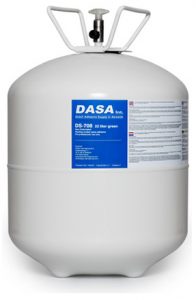Surface contact is major to cement execution when holding pressure-delicate glues, thus it is basic that surfaces are set up before hand and that the glue being utilized is applied in the right way. It would be ideal if you recollect that the attachment you are attempting to accomplish is just the atomic power of fascination between would not at all like materials. The cleaner and cleaner the surfaces of these materials are, the more noteworthy the cement bond will be. All surfaces should be totally dry and clean, which requires the expulsion of any dampness, oil, or residue. The main exemption to this standard comes when utilizing some virus start cement items, for example, the twofold sided froth tapes. Such items convey a protected exceptional equation that permits the glue to frame great bonds in any event, when applied to surfaces where dampness fume is available.

In the event that there is any tainting on a superficial level at purpose of contact, at that point the glue will essentially shape its bond with this and not the first surface. It is firmly suggested that IPA liquor be utilized as a cleaning specialist, because of its capacity to vanish rapidly and without leaving oily buildups. Utilizing tissue paper or build up free fabric, wipe the surfaces a single way just to stay away from re-sullying. Continuously structure your bond at surrounding temperatures to stay away from buildup issues except if utilizing our virus start innovation run, as dampness must be viewed as a type of sullying and will at last debilitate the grip.
Guarantee that any shaped parts are liberated from the nearness of discharge operators, for example, silicone or vegetable oil and so on. While applying your tape it is basic that weight is applied to make sure about the necessary bond. This guarantees most extreme surface contact and atomic fascination. Time and Temperature additionally increment sub-atomic fascination thus will expand the bond. At the point when the epdm lijm reaches we consider the atomic response the ‘wetting out’ process, and the more drawn out the glue is left to ‘wet out’ the more grounded the bond will be. Contingent upon the glue innovation being utilized, it is suggested that the ‘wetting out’ period be somewhere in the range of 8 and 24 hours. Raised temperatures will empower the cement to stream all the more effectively thus this will at last accelerate the ‘wetting out’ process. Solvent acrylics which can require as long as 24 hours to totally ‘wet out’, albeit a decent 60 of your bond quality will be accomplished straight away. Water based acrylics, again these cement plans will in general be very hard and require up to 24hrs to ‘wet out’.
